|
This is a poem I wrote in 2004. I imagine all of my poetry to set to music, though I am rarely able to come up with tunes of my own. This one I imagine to the tune of Just Push Play by Aerosmith. Peas porridge hot Peas porridge cold Peas porridge in the pot Nine days old Some like it hot Some like it cold Some like it in the pot Nine days old Gramma's in the kitchen Smokin' up some pie Grampa won't eat it And he won't say why Gramma's in the kitchen Servin' out some pie Grampa won't eat it And he won't even try Mikey sees some cornbread Sittin' on a shelf There's nobody around He gets it down himself Mikey sees some cornbread Sittin' on the floor Mikey walks away He don't want it anymore Peas porridge hot Peas porridge cold Peas porridge in the pot Nine days old Some like it hot Some like it cold Some like it in the pot Nine days old Kristen's at school Kaylee's on the phone Danny's outside Creating fantasies all alone Kristen's at market Kaylee has flown Tom walks in And makes himself at home Who ate the cheese? Daddy wants some more He'd get it himself But he's too poor Mikey ate the cheese He ate it before Daddy chases mikey Right out the door Peas porridge hot Peas porridge cold Peas porridge in the pot Nine days old Some like it hot Some like it cold Some like it in the pot Nine days old Peas porridge hot Peas porridge cold Peas porridge in the pot Nine days old Some like it hot Some like it cold Some like it in the pot Nine days old
0 Comments
Science: Experiments often give contradictory results. Whether measuring the charge of an electron, the age of a piece of rock, or the effects of the South Beach Diet on health, every run of a test will give a slightly different answer. This is to be expected. Where the problem lies is in what the experimenters do with the results. Often, an experimenter has some prior expectation of about what the result should be (especially if the run in question is not the first). When the result comes up outside the expected parameters, the experimenter will check the apparatus carefully to make sure it is functioning, the samples to make sure they are pure, and the math to make sure it was done correctly. If a problem is found, the result is ignored and not published (makes sense so far). However, when a result comes up within the parameters they expect, nothing is checked for problems. Why would there be a problem? Everything came out as expected. When things go wrong, they look to see what went wrong, but when things go right, they don’t look to see what went right. This is an example of what is called a feedback or confirmation bias.
One may wonder how we can trust our scientific establishment because of this. Actually, the science community defends these actions. I once heard a science teacher state that because of peer-review processes and independent experiments by others, this form of bias is kept in check. After all, that is how science has been done for a long time – but this is no solution. The other experimenters are also biased, often towards the same objectives. Simply being scientists gives them too much in common to be truly independent. Living in the same society, or even on the same planet, or even belonging to the same species means that many ideas are potentially embraced by a majority of experimenters. Many ideas are very common, such as inflation theory, superstring theory, neo-Darwinian evolution, punctuated equilibrium, intelligent design, Freudianism, democracy, Islam, and communism. Those on the fringe that do not share these beliefs are likely to be ignored simply because they are in the minority. In this way, dominant theories dominate more and more in a feedback loop. In the world of ideas, the rich often get richer while the poor get poorer. The News: The same type of problem exists outside of formal science as well. How we conduct our lives is based on the same circular reasoning. We believe rumors if they seem to be consistent with what we already believe, which is also a bunch of rumors. Most of you have probably heard that we have a problem with frivolous lawsuits in the United States. Some of you may actually remember individual cases. A commonly known one is the suit against McDonald’s because some lady accidentally burned herself with McDonald’s coffee. Common people were upset that any judge would judge in favor of the plaintiff in such a case. McDonald’s was not to blame for her clumsiness. They were not surprised, however. Many had come to believe that the legal system was becoming more and more inane. Because they were already predisposed to believe that these types of cases were common, the story of this woman and McDonald’s was not doubted, and the facts were not checked. The story spread quickly and became commonly known. As it turns out, there is some dispute over what actually happened. According to one source, McDonald’s was only judged half responsible, and that was only because their coffee was kept at much higher temperatures than industry standards. It wasn’t just hot coffee; it was dangerously hot coffee. The point is that it is possible that many (or most) of the stories that we read about in the news and hear from friends are incomplete and misleading. The reason they are accepted as truth is because they are believed to be common, yet the reason they are believed to be common is because there are so many stories. The reason this is a problem is that some politicians have suggested reforming the judicial branch to deal with these lawsuits. Whether or not there really is a problem becomes an important factor in determining what actions to take to fix it, and fixing a problem that isn’t there may instead cause a bigger problem. A related disinformation problem is determining how common is too much. There will always be some abuses of our legal systems, but at what point can it be said that we have “a problem?” People assume that the stories they read about are just a small sample of what is out there, meaning the totality is much larger, but suppose that what we see is the totality of it. News agencies want to print interesting news to keep their customers. Juicy stories of frivolous lawsuits are a favorite. It could be that there is no major problem, but only that every single abuse that ever happens gets to every listener from reporters in the media and then also by word-of-mouth. This does not mean that all our common beliefs that we receive as rumor are false, but many of them might be. Feedback Spirals: If you are scientifically curious you may have wondered how scientists know how old various layers of rock are. They do some radiometric testing, but this is costly and difficult. Mostly, they check for fossils. If they see a fossil known to be from a certain era, they then know that the rock surrounding it is also that old. And how do they know what era a fossil is from? Usually they check the recorded age of the rock layer it is in. Wait a second, isn’t that circular reasoning? That’s what young-earth creationists claim. In fact, this is one of their main talking points they use to convince people that evolution theory is in error, and the evolutionists do not deny that they engage in this practice! Rather, they claim that instead of a feedback loop, it is more like a feedback spiral. Those fossils first discovered had their surrounding rocks tested radiometrically. The estimated rate of sedimentation and other clues corroborated these dates. It was only then, that rather than go through the lengthy and expensive procedure of radiometric testing, scientists began to determine the ages of fossils by the known ages of the rock they were found in, according to earlier tests. This repeated activity built up a database of known fossil ages, which were in turn used to determine rock strata ages that had yet to be tested. To further clarify: suppose that it was found early on that trilobite fossils were only found in rock strata from a specific, narrow span of time. Then, anytime someone found a new layer of rock with a trilobite fossil in it, they would assume that the rock was also from this time span. The young-earth creationists, of course, point out that the number of trilobite fossils collected during the early days of paleontology may have been too small, statistically speaking, to rule out their prevalence elsewhere. If a large percentage of trilobite fossils exist outside the range assigned to them, the rock strata dates derived from them would then be horribly flawed. The flawed rock dates would then corrupt the fossil dates derived from them, which would in turn corrupt the rock dates derived from those fossils, and so on. In fact, young-earth creationists even point out that some trilobite fossils have been found over (and therefore in younger strata than) dinosaur fossils (which were supposed to have evolved later). These rare events are easily explained away by evolutionists as folding and overturning of the crust, which is agreed by all to happen sometimes. The disagreement is over whether it happened in those specific instances. It wouldn’t even take very many out-of-place trilobite fossils to screw up the whole system. If just one is slightly above its prescribed zone, it would give that rock layer a slightly older date, in turn giving all fossils in that layer a slightly older date. If every group of fossils overlaps slightly with every other group, it could be theoretically possible to assign all fossils to the age of trilobites. Of course, with various cross-checks this is highly unlikely in a complete and rich enough fossil record. However, nowhere on Earth can the entire fossil record column be found. It has been pieced together from different places. Add into this mix the tendency to doubt one’s individual dating results and look for any explanation to discredit them rather than doubt the whole theory, and a potent combination has been made in which confirmation bias can flourish. It would seem that “feedback spirals” can very easily fall into the trap of circular reasoning, making them feedback loops after all. Wisdom: Nevertheless, despite this tendency we cannot assume that this feedback spiral has degenerated into a loop, or that one hundred and fifty-eight years of well-established evolutionary theory are wrong. When they have a proper foundation, feedback spirals are legitimate constructs. I don’t know what to think. I wasn’t around during creation to see how God did it or how long he took. Is the Earth 4.5 billion years old? Quite possibly. I just want to open minds to understand how unsure the intellectual elites really are about everything. The same principles apply to nutrition, the environment, and economics. The wisest man is the one who knows that he knows nothing. What do you know? My mother and I visited Weedon Island Preserve in 2016. There are trails and boardwalks. In some places, the boardwalks stretch quite a distance in nearly straight lines while all around is green. It is only from the observation tower that I was able to see Saint Petersburg, Tampa, and all the way across the bay to the Big Bend power station just peeking above the treetops. The boardwalks lead to several observation platforms that jut out over lagoons where birds feed. Some are completely enclosed by mangroves. Others are open to Tampa Bay only by narrow straits. There is only one extreme corner of one platform in the park the picture below could have been taken from. If the photograph had better resolution, you would be able to see Apollo Beach. Looking down into another lagoon we saw a crab, a snail, many fish, several plumes moving back and forth, and strange gelatinous bags. Surrounding the lagoon were several wading birds. Throughout the park were smaller pools and ditches among the mangrove roots that came in amazing colors. Some were brown, others pale tan with a touch of green, others white with a touch of blue, others straight green, and most were a yellow-green reminiscent of Mountain Dew soda. As often happens when I’m awake, my imagination ran away with me and I thought of them as magical pools with magical properties. I thought that each might cure a different disease if bathed in, but if one stepped into the wrong pools, they would be turned into a frog. I stayed out of them. I had always assumed the ditches that run through mangrove forests to be natural occurrences caused by the interaction of tidal erosion and root growth over many years. Then I read an info board at the park about mosquito ditches. Humans used to dig ditches from the sea to allow fish and other predators of mosquito larvae access deep inside the mangrove forests so they could eat up the mosquitoes. Because of the changed coastline, the three species of mangroves that usually grow at different distances from the water now grow all together. The digging also explains all the large mounds of sand I saw throughout the park. I thought they might be leftover dunes from before the forest grew, or nests of some sort, or Seminole burial sites, but now I think they are simply where the ditch diggers dumped the excess sand.
There are fiddler crabs throughout the park. I couldn’t see them, but I knew they were there because when I slapped the wooden railing of the boardwalk, I heard the crackle of hundreds of them running to their burrows. I did this several more times until they stopped reacting. Further down the boardwalk, I tried it again and got the same response. That was a lot of fun. In the drier parts of the park, we saw a tortoise and an armadillo. We were able to walk right up to them as they fed. Neither acknowledged our existence at all. We also saw dragonflies and birds. These were much more flighty. Unfortunately, we went at a time when the history center was closed, but we were still able to learn that the island (actually a peninsula) was once used by an airport and a film studio. Now it has a power plant on it. Other things to note: much of the park is wheelchair-accessible, and one can rent kayaks to travel around the bay. There are suggested routes, some of which cut right through the island (actually a peninsula) through oversized ditches. There are information boards along the paths and boardwalks to teach about plants and other things. There are even a few benches. I loved it. This is a poem I wrote in 2004. I imagine all of my poetry set to music, but I am rarely able to come up with my own tunes. I imagine parts of this one to Boulevard of Broken dreams by Green Day. It's getting late and I can't sleep When I hold still I can hear no peep My mind is stuck in overdrive But I'm so tired I barely feel alive As I lie on my bed Visions of distant lands dance through my head But I know that it's all fake And these dreams are just here keeping me awake Can't fall asleep 'cause I'm so wired Been working all day and now I'm tired Please help me fall asleep tonight Sometime before first sunlight Take these dreams away Dreams, dreams, go away Come again some other day Leave me alone and let me be Leave me alone and set me free As I lie on my bed Visions of distant lands dance through my head But I know that it's all fake And these dreams are just here keeping me awake Take these dreams away Can't fall asleep 'cause I'm so wired Been working all day and now I'm tired Please help me fall asleep tonight Sometime before first sunlight Take these dreams away One thing I have observed in life is that when two people look at the same set of data, they can sometimes reach very different conclusions. Some people see patterns that aren’t there and others don’t see patterns that are there. This is sometimes called patternicity or apophenia.
I will give you an example that occurred often in 2004. The church I went to then had time set aside to allow the different members to speak up front if they had something to say. Every week, several different people shared a verse, a song, a testimony, or a brief message. It was not known ahead of time who would speak or what they would say. After the service, I often heard from my friends that they saw a clear pattern in what was shared. Even though there was no collusion on the part of the members, the songs, verses, testimonies, and messages all covered the same subject to give an overall message for the day. They used the existence of this pattern as proof that God was involved. Now, I am not suggesting that God never gets involved in arranging messages, but I just don’t see the same pattern that they do. First of all, since it is a “church gathering,” subjects such as love, God, Jesus, and prayer are bound to come up quite often. It is impossible not to find a pattern of those subjects being covered every week. Yet, they saw some significance to it. It isn’t just the broad subjects that they claimed. Since every subject relates to many others (including those only barely touched upon) and every message of any significant length covers very many subjects, it is no wonder that some of these lesser subjects match. In fact, it is possible to claim in all truthfulness any subject in the universe as a secondary subject of any message. Suppose I gave a speech on crocodiles. I might briefly mention a study on genes giving insights into reptilian evolution, but only as a minor footnote. Another person might then give a speech on the invention of the pencil sharpener. They might mention the composition of pencils, but only as a minor footnote. If my friends were in the audience they would see a link: we both talk about chemistry. I would have covered indirectly the subject of DNA, and the second person would have mentioned the substances of lead and graphite. One can pull any pattern out of those two subjects! One could claim that they both cover safety around sharp objects or that they both cover the world of non-humans (if they are used to hearing only speeches on health and social sciences). Although I disagree with them, I am not calling my friends stupid; these are intelligent, respectable people (mostly). These types of errors are easy to make. In fact, greater intelligence makes it easier to find patterns or infer patterns from incomplete data. I draw a parallel with optical illusions (no pun intended). The better one can see, the easier it is to see what isn’t there. I see this same problem all the time. Looking at the same data, some people see clear evidence for global warming and others do not. Looking at the same evidence in a trial, some people see clear evidence of guilt and others do not. This is a source of a lot of conflict. I don’t always know the truth for sure myself, but sometimes I can be very sure that neither does anyone else. It still amazes me how confident people can be in things they know nothing about. There is of course, another possibility. Since the probability of occurrence of each subject is very tricky to quantify and measure, it could be that I am the one who is mistaken. Perhaps the pattern is significant after all. I haven’t been able to check it out mathematically. All the statistical number crunching happens in our subconscious, so I couldn’t tell you where to begin looking for errors. I would be very interested to find out what causes this phenomenon so we can fix this problem that leads to conflict and poor decision-making. Also, this phenomenon is hard to explain. I tried to use an example above about pencil sharpeners and crocodiles, but if one actually does see the chemistry connection I described, how can I then convince them that there is no connection and use that to then explain the problem at church? The example at church suffices for me, but not for my church friends, so why would the crocodile-sharpener example make things any clearer? I think that the more examples used, the chances that none of them will work gets smaller and smaller. What do you think? What causes us to see patterns differently? What can we do about it? Little Manatee River State Park in Wimauma, Florida has two entrances. North of the river directly off 301 is a 6.5 mile trail loop and primitive camping site. South of the river is where the main campground, playground, picnic areas, and more trails are. I have been many times since 2013 and I usually take the north entrance. Shortly after entering the woods, the trail splits. To the left it runs along a part of the river, sometimes overlooking it from high banks, other times running through boggy areas. This is where I have seen some rather large turtles, centipedes, spiders, a skink with red cheeks, and many sweet flowers. To the right the trail runs through a dry area with several open places covered by either grass or palmetto. This is where I have seen birds, dragonflies, and a dead tree swarmed by dozens of bees. I have also seen many snakes and many more roots that look like snakes. I once encountered a trio of boars. They snorted at me and departed my presence rapidly as if I wasn’t cool enough for them to hang out with. For a second, I thought I was back in Junior High School. I once saw two bobcats in a tree! Even in the winter, I always find some animal life – even if it is only a distant vulture. September 2014: I returned to the part of the Little Manatee River State Park north of the river in September of 2014. Everything was different. This time I decided to take the shorter loop and avoid the perpetually drowned areas but the recent rain had made the entire area wet. On the way in I had to keep reapplying my bug spray to keep the biting flies at bay. It barely worked. In addition to flies, I saw lubber grasshoppers, several butterflies (including one that was solid orange), and ran into countless spider webs across the trail. I eventually picked up a stick to sweep out in front of me but somehow still walked into five more webs before my walk was over. Also, my stick was so rotted it fell apart in my hands, getting shorter and shorter. Sometimes, you just can’t catch a break. The jungle was noisy this time. I heard sand hill cranes, intermittent choruses of very loud frogs, very loud bees, and the loudest cicadas I have ever heard in my life. I’m surprised my head didn’t explode. There was also a goblin. Seriously, I heard something approaching fast behind me that sounded like cross between a police car and a hyena, but when I turned to look there was nothing there and the sound stopped. I crossed several puddles, muddy spots, and even a stream. Finally, I encountered a puddle that extended as far as I could see, the closest part of which was deeper than up to my ankles and farther across than I could jump. I attempted to drag logs to make a bridge, but it just wasn’t working right and I found the logs were covered in centipedes. I also saw several interesting features I did not notice the last time I was there: February 2016: Later, I went when it was dry. Even though I have been to Little Manatee River State Park before, it seems I am always finding new things I never noticed before, such as trees with unique twists in them, single charred trees while nothing around them is burned, and trees in various states of decay. When I returned in February of 2016, I saw a hollow stump I had never before noticed. Only the bark remained, greatly resembling puff pastry. I also saw several trees with swollen balls on their branches – and not all in the same part of the trail. Are they truly new? Or by noticing one was my mind primed to notice the others? I was also noticing the odd shapes of large flakes of wood scattered everywhere. What goes on when I’m not there? 215 Lightfoot Road, Wimauma, Florida
Floridastateparks.org/park/little-manatee-river From 2013 to 2015 I visited Camp Bayou County Park in Ruskin, Florida many times. I returned in February 2016, but this time I went when the Paleo Preserve Fossil Museum was open. Florida has very few fossils from earlier than the Pleistocene, when there were giant pigs and Megalodon sharks, so the Velociraptor skull they have had to be brought in from elsewhere. Everywhere there are bits and pieces that used to be inside alligators, crocodiles, horses, llamas, and mammoths. On the floor was a mammoth tusk that probably weighs more than I do. There are original bones, mineralized bones, and resin casts. There are also many mollusks and echinoderms (sea biscuits!) represented, as well as agatized coral, Florida’s official state fossil and stone. I had never heard of such a thing. As it turns out, there are seven states without official fossils, including New Hampshire and Rhode Island, which along with Florida are the states I’m most familiar with. Ammonite shells can be bought for three dollars. There are also horse teeth, shark’s teeth, and more that can be bought for between two and ten dollars. The non-profit that runs the park is always looking for donations. Later I took a quick walk down one of the trails. The palmetto around rustles very loudly with the slightest movement. What I thought was a giant, prehistoric pig crashing through the undergrowth turned out to just be a squirrel. I stopped to look at a plant and a grasshopper jumped near my face with a loud pop and flapping of wings. I also saw an osprey in a tree and we stared at each other. Besides the interesting animal life, there are many dried palms on the edge of the park that can be whittled down to make excellent swords. Add some sound effects, and they become light sabers. My imaginary friend was so impressed with my skills that he refused to fight. Why won’t anyone play with me? :(
Paleopreserve.com From 2013 to 2015, I visited Camp Bayou County Park very many times. The park has many trails, a butterfly garden, and an outdoor Seminole village exhibit. It has a miniature, outdoor, self-service library. In past visits, I have seen snakes, turtles, and very many birds. I saw something new every time I went, such as these orange vines, these green vines, and these flat beans: I also saw wild pigs, an armadillo, a moth with antennae five times longer than its body, and this mole highway: There are also many signs to keep you on the trails, even though the trails are very clear, and the signs are not: I’m silly.
This is a poem I wrote in 2004. I imagine all of my poetry set to music, though I am rarely able to create my own tunes. I imagine the beginnings of each verse to the tune of Boulevard of Broken Dreams by Green Day. There is a song stuck in my head Maybe it will be there 'til I'm dead Over and over it plays But you know I can't complain I'm skippin' to my new old favorite song It moves my feet along The beat goes on and on I love that catchy little song I'm hummin' it all day long On me it always drains But I still can't complain I'm skippin' to my old new favorite song It moves my feet along The beat goes on and on That song has my mind It has my heart Nothing left for me or you, honey! I love that catchy little song I'm hummin' it all day long On me it always drains But I still can't complain I'm skippin' to my new favorite old song It moves my feet along The beat goes on and on That song makes me happy It makes me smile Gonna take us for a ride, honey! I'm skippin' to my new old favorite song It moves my feet along The beat goes on and on The beat goes on The beat goes The beat goes on and on and on and on and on Darwinizing CultureDarwinizing Culture, published in 2000, is a collection of essays written by both opponents and proponents of the memetic paradigm compiled by Robert Aunger. It gets somewhat technical in parts and is generally not for the casual reader. In this book, serious questions are raised about the validity and predictive power of the memetic paradigm. Some of the points raised are: Since the information in meaning is not thermodynamic in nature, but rather context-based, how is one to measure it without using one’s own subjective mind? Is it really possible to break down all meaning into fundamental quanta? Since the definitions of words are made up of other words, each with their own definitions, isn’t meaning self-referential? Since unlike genes, memes are not passed directly from one person to another but rather recreated in the mind of the receiver based upon assumptions about the causes of the behavior of the sender, might unique differences in each individual prevent the transmission of any contextual information in any objective sense? Might it then be better to measure the spread of observable behaviors instead? Is it possible that in some cases memes can blend to form hybrid memes, making independent measurement impossible and the concept of quanta of meaning an illusion? This book is highly informative and well-balanced. Theories of psychology and how the first memes might have arisen are also discussed. Overall, it is a great book. Virus of the MindIn Virus Of The Mind, author Richard Brodie explains in smooth, well-written, laymen’s terms what memes are and all about memetics. This is the perfect book for the beginner who is interested in memes but doesn’t know exactly what they are. Types of memes are discussed, such as strategies, associations, and distinctions. So are how memes are used today in religion, politics, and business. Methods of getting one’s message noticed are explained, such as using trigger-words such as mission and danger. After reading this book, the memetic worldview will become clear and exciting. Below is an excerpt from page 16: “The fourth concept necessary to understanding mind viruses is the new science of evolutionary psychology. This field examines the biases and mechanisms of our minds that evolved to support our survival and reproduction. Some of these biases take the form of psychological buttons that can be pushed to penetrate our mental defenses. I called this part of the book ‘Crisis of the Mind’ rather than simply ‘Introduction’ because the former pushes more buttons: it attracts more attention and more people will read it. I called this book Virus of the Mind rather than Introduction to Memetics for the same reason.” Thought ContagionWritten by Aaron Lynch, Thought Contagion is a book packed full of hypothetical examples of memetic effects. If Richard Brodie’s book Virus Of The Mind wasn’t enough for you, Thought Contagion will show by example how memes are expected to work. Below is an excerpt from page 124 wherein Lynch explains one theory as to why more women than men attend church:
“Most Christian propagation advantages work fairly symmetrically between the sexes. Yet Christianity has achieved greater prevalence and intensity among women than among men in North America, suggesting that at least some of its contagion works differently for each sex. “Traditional social science might look for sex differences in emotional receptivity or critical thinking to explain the differences in religiosity. Memetics can suggest entirely new principles behind the religious gender gap. “Gender-skewed proselytism during mating offers one memetic explanation. Religious homogamy memes can lead both sexes to proselytize opposite sex unbelievers in order to make them ‘eligible’. Yet men might do so more assertively than women, at least traditionally, resulting in more conversions of women than men.” Critics of memetics have raised objections to this book, claiming memetics is long on theories but short on proof, the meme mixtures in society are so complex that memetics can be used to argue for the exact opposite of many observed cultural behaviors, and alternative theories exist to explain this same phenomenon above. However, memetic effects must have at least some influence over culture. This book is not meant to be a definitive declaration of how things work, but merely an exercise in thinking memetically. This book introduces memetics to the public; it is not a scientific journal. Since I drove by it so often, in June of 2015 I decided to stop in Haslam’s Bookstore in St. Petersburg, Florida and check it out. It is so big inside that they actually provide a store map. They cover all sorts of fiction and non-fiction, including physics. They even have signed, first-edition copies by famous people. These are kept behind glass. I tried to write a review of my visit, but I was in a goofy mood that day… Deep in the darkest bowels of the realm of Saint Petersburg, Florida, sits Haslam’s Bookstore. Established in 1933, it has been serving wizards, lords, and peasants alike ever since. I had heard tales of these mysterious objects known as books and how they could impart great wisdom, knowledge, and insight to those gifted enough to tease it out of them. I confess I have been so far unable to entice them to grant their knowledge to me. I have tried squeezing the knowledge out of them in great presses. I have tried making sacrifices to them, including offering the smoked vertebrae from my favorite servant (I shall miss him). I have tried threatening the books with fire and beatings. Alas, they will not listen to me and I am afraid I have somehow unwittingly offended them.
I had heard of a place in Sarasota, Florida called the Marietta Museum of Art and Whimsy and so I decided to check it out. The website mentioned it was closing for construction in June 2015, so I knew I had to act fast. It was pretty cool and I wrote an account of my adventure for you, but I was in a goofy mood that night… I had long heard rumors of the Marietta Museum of Art and Whimsy, but I had always held such fanciful tales as nothing more than mere superstition of the lower classes. When I then saw on my medium’s crystal ball (I believe those in the northern kingdoms call it an internet browser) that such a place in fact existed in the kingdom of Sarasota, I knew I had to see for myself if the other tales about it were also true. The ride to the kingdom of Sarasota was long but uneventful. I did stop once to fuel my travel-machine, but that was it. Finally I arrived in front of a small building with a dolphin statue out front and took the second-to-last parking space at 1:24 according to my electronyc sundial. Opening the door and passing the threshold, I entered a room of fantastic magical creatures never before observed in the civilized world. There were stuffed cloth people and sculptures of coral, birdhouses, cats, and much more that was unidentifiable by me. There were paintings of all sizes and shapes hiding around every corner. A mysterious being soon greeted me and informed me of the Marietta grand law. First, I was told that under no circumstances was I to touch any object for any purpose, nor touch any other mortal such as myself without explicit permission. It seemed an impossible task, but I raised no objection as I feared greatly what unnatural powers this being might posses. Second, I was told that under no circumstances was I allowed to eat any object for any purpose, whether an object I found there or one I had brought in myself. I was greatly relieved that whatever else they might do to me there, at least I would not be on the menu. Still, I prayed to the spirits of art that the being could not sense my extremely edible nature. The being did grant that I was allowed to capture images with my electronyc eye, without which I would have no proof of the existence of such a magical place. Among the paintings therein were the works of a paint wizard named James Gibson. His specialty seems to be brightly colored trees. The paint was layered so thick in some places that it stuck from the canvas in great flakes, seeming as if to reach out for me. Slightly frightened, I wondered if the grand law concerning consumption applied to the inanimate as well as the animate. Among the sculptures therein were the works of a ceramics wizard named Ayenne Applebaum. The name being foreign to me, I was unable to discern if it be a male or a female – or perhaps both. Who alive can comprehend what strange ways these immortals might have? I decided for my sake to refer to the wizard as a she, rather than succumb to the madness becoming so common in these strange lands of late. Her sculpture was that of a coral reef, complete with armored seahorses so expressive and detailed I thought for sure that I was in fact drowning in the sea and imagining the entire museum for lack of breath. I saw pictures of birds that were farms and towns that were birds. I saw paintings of cupcakes and paintings of cats. I saw red, green, and blue stars dance across the ceiling in ways certainly never ordained by the creator of the heavens. Feeling a need to escape this abomination, I found a door and left the building, but in my haste I had exited out the wrong side. I was surrounded by brightly colored plants and animals that remained eerily still. I very nearly died from fright at stumbling across the metallic beast imaged below before realizing it was just as devoid of movement as the others. I warn the reader that this beast is of a particularly frightening nature and I will not be held responsible for what effect it may have upon you have you neglected your morning prayers. Still, I feel it important to include in this report so that you may understand the terror I was in at that time. I urge you to view at your own risk and to first clear the room of women and children. There were chairs and tables in the shade and I saw many mortal visitors sitting quietly oblivious to the strange environment. There was music here as well and I endeavored to discover the source as I could see no band. My horror was boundless when I discovered the music was in fact emanating from grey stones among the greenery. I wept when I realized that our greatest performers had had their souls captured by these devious Marietta beings and placed into stones, forced to sing for all eternity. I regret to inform my readers that John Lennon, Bob Dylan, James Taylor, and Paul Simon have been taken from us and imprisoned by evil Marietta magic. Woe be unto the southern kingdoms indeed.
After taking a few hurried images with my electronyc eye, I reentered the building trying to retrace my steps. I now saw that there were several Marietta beings, identifiable by the glyph-printed placards hanging from their fronts – or at least what I imagined to be their fronts since this was the side in the direction that they moved. One of them had a large group of mortals entranced by her (his?) words as she told the histories of how each artifact came to be. I caught some of her words as she told how one of the art wizards was cured of a dark, homicidal insanity by channeling it into fabric paint on plywood. I shuddered to think of all the concentrated evil locked up in these pieces of art. That I was not also entranced by her words I owe to the lucky fact that I was on the fringe of the group and her words were hard to penetrate the ambient noise, making them hard for me to comprehend. At last I was able to find the door I had originally entered and I stumbled into the sunlight a full hour in the future. The sights and sounds there no man should ever be made to endure, yet I survived and escaped. The Marietta are not omnipotent; they can be defeated. It is true they are soon to be leaving our realm, but they will return in October – and that is when we will be ready for them! They aim to deliver horrors to this world, but we will instead deliver horrors to them! I bid all who are willing to bravely face this menace to follow me next autumn back to their Sarasota lair, where we shall don our fiercest war paint and show the Marietta that we mortals too can be artistic. Who’s with me? This is a poem I wrote in 2004. I have no idea where my poetry comes from most of the time and that is especially true in this case. I apply effort and thought to my drawings, novels, and short stories, not to my poems. I think of myself as an author, not a poet. I don't plan them; they just sort of start to come to me unexpectedly. I imagine all of my poems set to music. I imagine this one to a modified version of the tune of Bohemian Rhapsody by Queen. Tell me what you think. Dear son It seems I've hit a snag The supplier fell through The army's coming to take me away The thing is anyways I love you Tell the grandkids I love them too Keep up the good work Be thankful your mother isn't with us to see me here today She was so weak but I'll see her soon And I'll be okay I'm sorry If this was hard to read I'm writing very fast I think I can hear the bombs now I just don't know how For decades I've worked hard to achieve the dream Then it all came down I know good will win in the end but apparently not today But don't lose faith it will happen soon And you'll be okay This time I won't be coming back I found a job I just can't hack Still, I'll put up one good fight And you know I'll be alright And I'll be okay Dear son Revolution is hard Remember the reason The children need you now more than before As I'm sure you know The future Is in your hands I'm afraid I've Been retired for good We will meet again but I'm afraid when just is not today This letter I must cut short too soon And we'll be okay We'll be okay I published my first science fiction book! I’m still excited! This is the story of a man named Nate who finds himself living in a psychiatric health care facility. He does not remember how he got there, but as he starts to remember things from his past life, he realizes that the universe has changed dramatically since he was young. A story of childhood nostalgia, sometimes comically illuminating the differing perceptions adults and children have of the world, The Spider, The Witch, And The Spaceship is also a journey through the memories of a man for clues as to the real reason he is where he is. Filled with tension between opposing claims of the ultimate reality, this is a novel that will keep the reader guessing until the end. A common thread running through my life is that I am able to see all points of view in ways that others cannot. My father and a friend of his used to argue for hours every time they visited over the role of free will in sin and salvation. His friend was a solid Calvinist and would cite scriptures that seemed to suggest God elected ahead of time only a few for salvation, but on closer reading were actually compatible with either Calvinism or Arminianism. My father, while not officially claiming a position, would cite other scriptures that he claimed proved beyond all doubt that God was not willing that any perish.
Calvinism and Arminianism: Simply put, Calvinism is the belief that God decided ahead of time who would be rescued from sin and who would be destined for Hell. Free will has no role. Those damned can do nothing to receive God’s favor, and those saved can do nothing to resist their spiritual growth. Simply put, Arminianism is the belief that each individual chooses whether to sin and whether to accept salvation. God is powerless to interfere. Those going to Hell willingly embrace it. Both Calvinism and Arminianism have been used as excuses not to reach out to sinners. Proximate and Distal Causes: It all seemed so silly to me. It was obvious that my actions were the results of choices I made myself, yet I understood that I had reasons for making these choices, meaning those reasons were deterministic. Every event has proximate and distal causes. When Harry kills Scott, what is it that actually kills Scott? The bullet? The gun that sent the bullet? Harry, who pulled the trigger? Sam, who told Harry that Scott was sleeping with his wife and planned on killing him first? Scott, for divulging his plans to Sam? The gun manufacturer, without which there would have been no gun in Harry’s hand? The inventor of gunpowder? Or is it God, without which the chemistry of gunpowder would not exist, Harry would not exist, Scott would not exist, life would not exist, and therefore death itself would not exist? Every one of these explanations is equally valid, depending on the context and the behavior you want changed. If Scott realizes that every time he tells Sam a secret, somebody comes gunning for him, he may legitimately see telling Sam secrets as the cause of his problems. It is equally correct to say that Sally buys a new car and that Julie sold Sally a new car. This way, Sally’s husband can give Sally credit for buying him the best birthday present ever, and Julie’s boss can give Julie credit for selling more cars than any other employee. Both are right. In the same way, we sin by choice and accept salvation by choice, but in a way that God arranged for ahead of time like a master salesman. Calvinism and Arminianism are equally true and not incompatible with each other at all! Mental Parasites: Every time I explain this, people look at me as if I have five heads. They cannot understand what is painfully simple and obvious to me. The same thing happens with talk of memetics. People balk at the idea that our actions are controlled by sets of ideas that are passed from one person to another like viruses or parasites. They say that it leaves no room for free will. Horsefeathers! Is it us or our memes that are responsible for our actions? The answer, of course, is both. Consider the conversation between two chess players below: Doug: So is it me or my memes that are responsible for my behavior? Rich: You are responsible for what your behavior is, but your memes are responsible for what you are. Doug: What does that mean? I am the way I am because of me. If I stand up or sit down or move my rook to put you in check at this moment, it is because I choose to, not because I’ve been programmed to. Rich: Oh absolutely, I agree one hundred percent that you have chosen to put me in check, but why? You must have some reason. Doug: Of course I have a reason! I want to win. Rich: So would you say you have a belief that using your rook to put me in check is one way to win? My knight just blocked you by the way. Doug: Look, I put a lot of hard work into studying different chess strategies; I saw this one used last year. Your knight is gone now. Rich: So you got the strategy idea from someone else? You mean there was an idea that passed from one person to another by imitation or communication? You mean that the reason you moved your rook was because of a meme? Doug: Fine, I have a strategy-meme in my mind, so what? It doesn’t control me; I do what I want, not my memes, as if they can even have any desires of their own. I could just as easily have chosen to do otherwise. Rich: Yes you could have, but then you would have been acting on different beliefs, goals, and strategies. Those are all memes, ideas that are passed from one person to another. Doug: I could have just as easily done something random. Rich: Sure, but why? To prove that you are in control because you have the belief-meme that you must convince me you are? Doug: That’s not why… Rich: Why then? You must have some reason, and whatever reason it is, it is based on your goals and beliefs. Of course you still have free will; you are free to choose anything – except that which you do not want to do (meaning that which is against your goals), and that which you do not realize is possible (meaning that which is not contained in your beliefs). Doug: Fine, I do things because of my ideas – but I have many ideas. I must choose between them. Rich: Of course, but why do you choose some over others? It is because of all the other ideas in your mind. Memes all interact in complex ways and we are still learning just how they do that. The concepts of personal choice and memetic natural selection are not incompatible; they are merely different perspectives to help us gain insights that we could not by sticking with only one model. Doug: Alright, you win; I am controlled by my ideas, but they are my ideas, nobody else’s. They are still my ideas! Some ideas I might get from others, but most of them I come up with on my own. For example, I know of no chess strategy that applies to the configuration our pieces are now in, so I will make up my own and move my queen … here. Rich: That’s not a bad move; my bishop is now trapped. Still, whenever one creates new ideas, or invents new things, they are simply combining ideas they already have in new ways. You must have combined your knowledge of how the queen functions in chess with your desire to win and several other ideas to have created your strategy. Doug: Well, I suppose so, but those aren’t memes. Those are new ideas. Check. Rich: Those ideas came out of memes, and if you pass them to another they will become memes too. Memes spawn new memes all the time either through mutation or through interaction with other memes. It’s called memetic evolution. Doug: Isn’t this a dangerous way to think, though? If people were told that they are simply acting on their memes, wouldn’t society break down as people lost the concept of personal accountability? Rich: Some might misunderstand I suppose, which is why studying how ideas spread to prevent that is so important. For the most part though, people will still behave decently. They may do so because they have a meme that makes them fear reprisal, or they may do so because they have a meme that makes them genuinely care for others. I fail to see why knowing where one’s actions truly come from would make any difference. Like I said before, you are responsible for your behavior, but your memes are responsible for you. Checkmate. Hopefully that clears up some unnecessary debate. Free will and determinism are not enemies! If you are looking for fun and/or educational activities to do with your kids (or by yourself), WhatDoWeDoAllDay.com is a great resource. It is broken down by grade level and by subject. They have links to books and outside resources. Here is a list of low-prep activities to keep your 2-4 year old busy so you can finally sit down. Have you ever thought of ripping up old magazines or sorting objects into groups? I kind of want to do this stuff now. Seriously, does anybody have any children I can borrow?
I visited Withlacoochee Park in Dade City, Florida in March 2015. It was hot, humid, and covered in flies, but other than that it was pretty cool. There are several large parking lots, picnic shelters, two playgrounds, and a canoe launch. The good playground has plastic drums and metal “bowls” built into it, just in case your children aren’t loud enough already. Much of the structure has hornets growing on it, just in case your children like to pet animals. Also, the highest point of the structure, from which two covered slides attach (very slippery and fun, I might add), can only be accessed by a short ladder through a tight hole in the floor – I assume to keep fat kids and grown-ups out, because nobody wants either of them around. There are long trails looping around the park, but the flies wore me out before I could explore them all. I did climb the observation tower and traverse one swamp boardwalk while I was there though. I saw several interesting things. I saw some very red Christmas lichen, which is usually pink around here. I saw a rather large owl at a close distance that stared at me long enough for me to wave, but not long enough for me to take its picture or get an autograph. I also saw a tiny tan skink, a very large burrowing turtle, and a tiny grey-and-black toad. I found a leaf that looked as if it had been bitten by a cookie-cutter shark – which is very unlikely this far inland. I also took a picture of a cluster of two species of lichen on the forest floor that I meant to be the cover picture for this report. It was the best picture I took, but it somehow must have fallen out of my phone because it didn’t make it home. I'm very silly.
I visited Crews Lake Wilderness Park in Shady Hills, Florida in January 2015, a strange land of brightly colored plants, elusive dwarf people, and magic rocks. My adventure started when the road to the park was closed and I had to take a detour. Once inside, I drove to the far end and parked near the lake, which to me seemed more like a swamp. I walked on the pier and saw reeds, lily pads, and many tiny fish. In the distance was a flock of white birds, but I saw no other life. Then I climbed the observation tower and took the picture above. Walking back towards the entrance, I crossed a ball field and a playground. There was also a basketball court, but little else of note. Walking along the road looking for the trail entrances I saw driving in, I first came across this dwarf railroad: Finally I found some clearings to the left, which turned out to be campsites. These led to a trail I took clockwise around the park, finally following the railroad back. The park seemed smaller than I expected. It was just a bit boring. I saw no flowers, no birds, no squirrels, no lizards, no snakes, and almost no insects. The great thing about the outdoors in January is that there are no bugs, but the bad thing about the outdoors in January is that there are no bugs. Strangely, many of the roots appeared to be painted. At first, I only saw pink, but later I saw combinations of yellow, green, orange, and pink. Later, I saw yellow roots – some just feet away from unpainted, grey roots. It was very mysterious I also saw this clump of brightly colored moss in a parking lot: Yes, I know it isn’t really moss. I’m not stupid, I just play one on TV. Back near my car, I saw this mystical doorway to another universe: The highlight of the trip was this smooth rock with geometric patterns carved into it. It must be some sort of enchanted magical stone, because I swear I saw it move!
This is a poem I wrote in 2003. I imagine all of my poetry set to music. I imagine the verses of this one set to the tune of Let Go by Aerosmith and the chorus set to the tune of Amazing by Aerosmith. There was a man who loved a woman As men tend to do There could never be another She filled his heart through and through She was his one and only She fit him like a suit Other women folk Couldn't hit the note Were lower than a substitute of a substitute He really truly loved her He only wanted what was best When she was displeased Then he could get no rest But the woman didn't feel the same Thought they were as different as a duck and a stone But when his love he confessed She had to say yes Couldn't bear to see him live his life alone There is a greater love out there For which there is no compare Unfortunately it seems much too rare But it's found inside those who truly care The greater love is awesome The greater love will make you new The greater love will get you through She tried to explain it To her girlfriends on the phone They didn't understand Thought she had sipped too much foam He's a really great guy Deserves a woman to help him work and play He's really going to need me That's the way it's going to be And so I'll forever stay There is a greater love That is simple, true, and right And I know that in the end I'll be all right Of course she would never tell him Would never let him know But the man had overheard Had heard every word And said you're free to go There is a greater love out there For which there is no compare Unfortunately it seems much too rare But it's found inside those who truly care The greater love is awesome The greater love will make you new The greater love will get you through You've been good to me You've loved more than your share But you know I'm an honest man And I have to be fair I'll return the favor I'm going to set you free Find someone you like The one who's right Don't settle for me I've lived since birth without you I'm sure I'll be okay I know you care so much But don't try to make me stay As he turned to leave She tried to grab his arm But he ran outside And they both cried And that's the end of my yarn There is a greater love out there For which there is no compare Unfortunately it seems much too rare But it's found inside those who truly care The greater love is awesome The greater love will make you new The greater love will get you through In response to the increase in political strife leaking over into our personal social lives here in the United States, I wrote a book in order to promote unity, civility, and tolerance. Others have written extensively on the machinations in Washington, but few seem to notice what the politicians’ rhetoric does to the rest of us. I feel like I have to watch my back around people who constantly repeat hateful generalizations and who make up their minds quickly with little or no evidence. These people are nutcases and they feel the same about me. This is why I wrote The Nutcase Across The Street.
Sometime between 2000 and 2003 I became fascinated in psychology and sociology and read much on the subjects. This has lead to many musings and observations over the years. I had always been interested in how people acquire ideas, especially beliefs, and how it was that different people could come to different conclusions. One branch of sociology that captured my imagination more than any other was memetics.
Memetics is the branch of sociology that deals with the study of memes. The theory of memetics states that meaning comes in discrete quanta upon which a Darwinian algorithm may act. Cultural institutions, knowledge, and the like are made up of ideas called memes. These memes are passed from one person to another by both communication and imitation and so spread through society. Some memes are more likely to be transmitted than others. Sometimes it is because passing on the idea gives some benefit to the transmitter (e.g. makes them look smart, makes people like them, makes people buy their products). Sometimes it is because the meme is more readily noticed to the receiver (e.g. promises higher income, warns them of danger, promises better sex). Sometimes it is because simpler memes are easier to remember, and fewer errors are made in transmission. Whatever the reason, some memes become common and others go “extinct”. It is said that those memes were “selected” against. Often, when a misunderstanding occurs in transmission, it is said that a “mutation” happens, creating a new meme. This new meme may be either more likely or less likely to spread, depending on its nature. Over time, a group of many interrelated memes (called a memeplex), such as a culture or a language, may evolve through this mutation and selection process. This is why many use the story of genetic evolution to help explain memetic evolution. Memes and Genes: Genes are inherited directly from parents. With the exception of mutations, the genes of the offspring are identical copies of the genes of the parents. Memes, on the other hand are not transmitted directly. A potential host must observe the current host’s behavior to “reverse-engineer” the meme in his own mind. When different memes cause the same behavior, the underlying memes may not be the same. Genes come from only two parents (or one in some species) and deliver their genes at conception. Memes can come from anybody at any stage of life. Genes have copies of themselves in every cell. To learn the genetic makeup of an individual, one need only take one cell. For nearly all types of organisms, this observation will not cause any harm and will certainly not alter the genetic makeup (single-celled organisms are an exception). To learn the memetic makeup of an individual, one cannot choose from billions of copies; there aren’t any. Any questioning, scanning, or “dissection” of the mind will affect what is there. The act of observing alters the memetic makeup. This is why study by observing behaviors and artifacts is preferred. Memes compete for resources (records and human memory) and so only some survive. Accents cannot be transmitted by being carved in stone. Practices deemed private will not be discussed and will die out in the individual that holds them. Some practices are simply inferior to others and are forgotten in favor of others. Some memes are spread almost exclusively from parent to child. Upbringing makes a huge difference to the way people turn out later in life. Smokers tend to spawn smokers. Children tend to be of the same religion as their parents. These memes prosper by encouraging the one who holds the meme to have as many children as possible. Taboos against birth control may be just such an example of this. In theory, those who shun birth control have more kids, and therefore more become carriers of the taboo. Over time, those with the taboo should outnumber those that do not. Benefits of The Paradigm: Memetics can yield useful insights that more conventional viewpoints that focus on the motives of individuals and groups cannot. One notable parallel that can be drawn is that between insecticides and censorship. Insecticides are used to kill certain types of insects, and keep them from spreading. Censorship does much the same thing to certain types of ideas. The point is to keep them from spreading. Unfortunately, there is a downside to using too much insecticide. Because of variation within the insect population, some insects are more resistant to insecticide than others. These resistant variants will invariably be the ones that escape the effects of the insecticide and continue to reproduce and spread. Then, because they are no longer competing with resources with their less resistant brethren (they are all dead, thanks to the farmer), the resistant variants now easily dominate, replenishing the numbers of the entire insect population in the next generation. If less insecticide or less potent insecticide was used, these resistant variants would never dominate over the others, and the insecticides would continue to be useful. This is how insecticides create “superbugs” (a similar phenomenon occurs with bacteria and antibiotics). In the same way, censorship, if too strict or far-reaching, can generate “superideas” by killing (halting the spread of) the less virulent ideas, leaving only the strongest and most censorship-resistant ideas to dominate. If the censorship were applied more gently, it would still have retained its usefulness. It is believed by many that this is one of the reasons that religions often flourish secretly in those countries where practitioners of said religions are heavily persecuted. This effect would have been very easy to miss by one not using the memetic approach. It is a great paradigm. Criticisms: There are many criticisms of memetics. One is that it has yet to make testable predictions. Culture is so complex that it cannot be known ahead of time which memetic effects will be strongest and so which memes will win. Whatever happens, it is compatible with the theory. Another problem is that cultural evolution may have a property known as high-sensitivity to initial conditions. This means that very small changes now can yield enormous changes in the future. Since it is impossible to know the exact state of every mind in the community in perfect detail, predictions will become exponentially inaccurate with time. This is the same reason that weather can’t be forecast accurately more than a week into the future. Feedback is also a problem if the scientists are themselves part of the same system they study. There is also the phenomenon of individual learning, as opposed to receiving information from others. It is not always clear how much individual learning there is in the system to compete with the memetic effects, and this must be taken into account. Another criticism that has been raised against memetics is the possibility that “blending” may occur between memes sometimes. When learning a language, does one adopt the accent for a particular sound most often heard by the individual in question, or does one blend the sounds together, creating a unique sound? While it is obvious that larger memeplexes such as accents blend by mixing and matching individual memes, it is generally thought that the individual memes themselves are fundamental units of information that cannot blend; one must adopt either one or another. Now, however, it is being questioned whether a such thing as fundamental units of contextual information (meaning) exist. At first glance, it would seem that there is no real cause for concern; the phenomenon of meme-blending should not kill memetics any more than the phenomenon of incomplete dominance should kill genetics. However, there is a difference: during incomplete dominance, the underlying genotype remains unchanged and one or both alleles may be passed on to the offspring. With meme-blending on the other hand, the original memes are lost and reverse-engineered, creating a brand new meme. It would be as if the offspring of someone with strawberry-blonde hair also had strawberry-blonde hair by reverse-engineering up some genes for strawberry-blondeness, rather than inheriting either a redhead gene or a blonde gene to combine with a gene from the other parent. Memetics may still be model worth using, though. If meme-blending happens infrequently or not at all, it can be considered mere statistical noise. The one thing that is clear is that much more study is needed. Please discuss. |
AuthorMy name is Dan. I am an author, artist, explorer, and contemplator of subjects large and small. Archives
February 2023
Categories
All
|



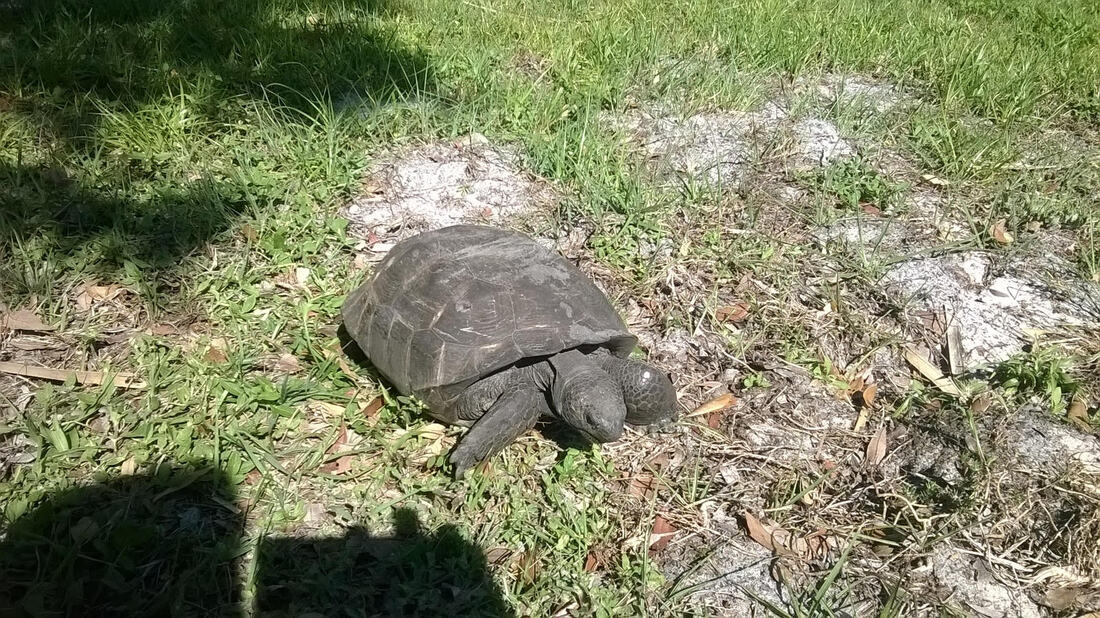



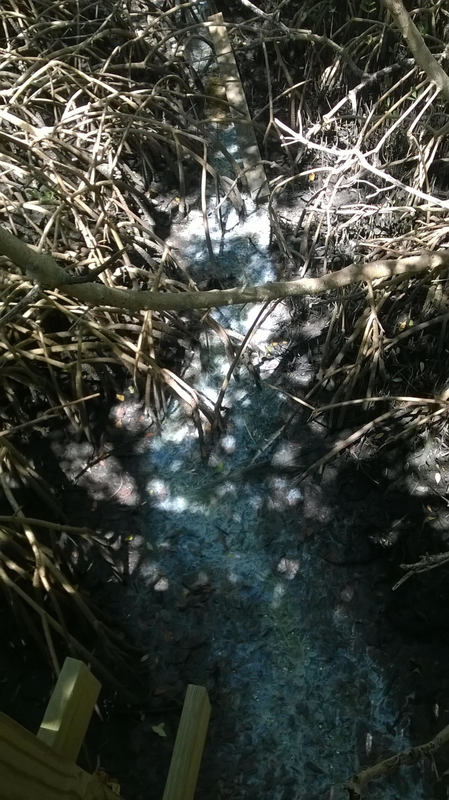

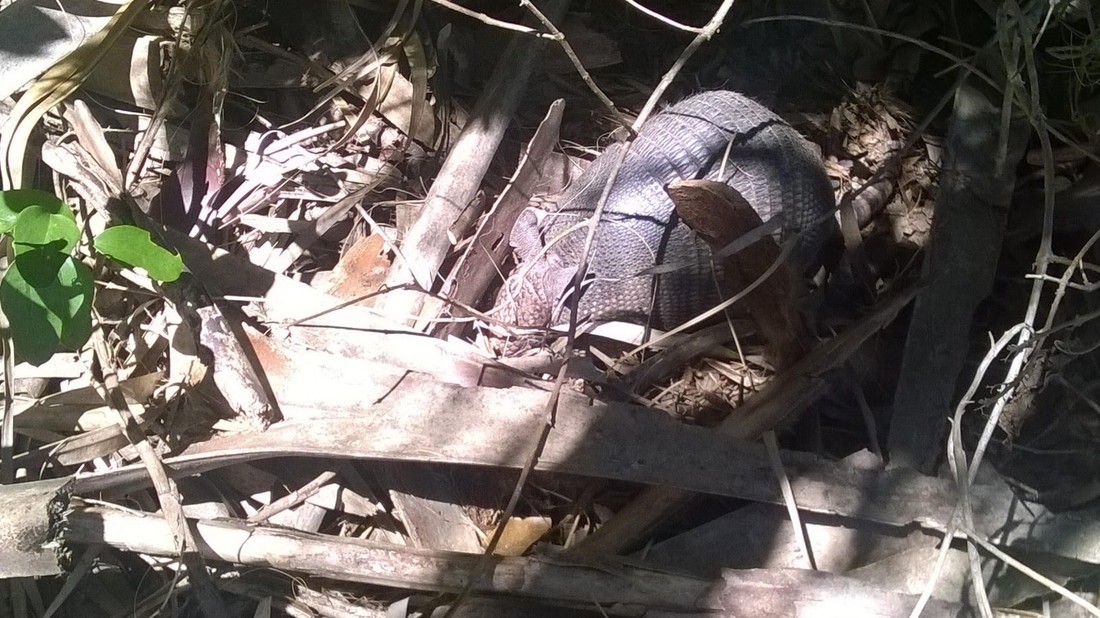
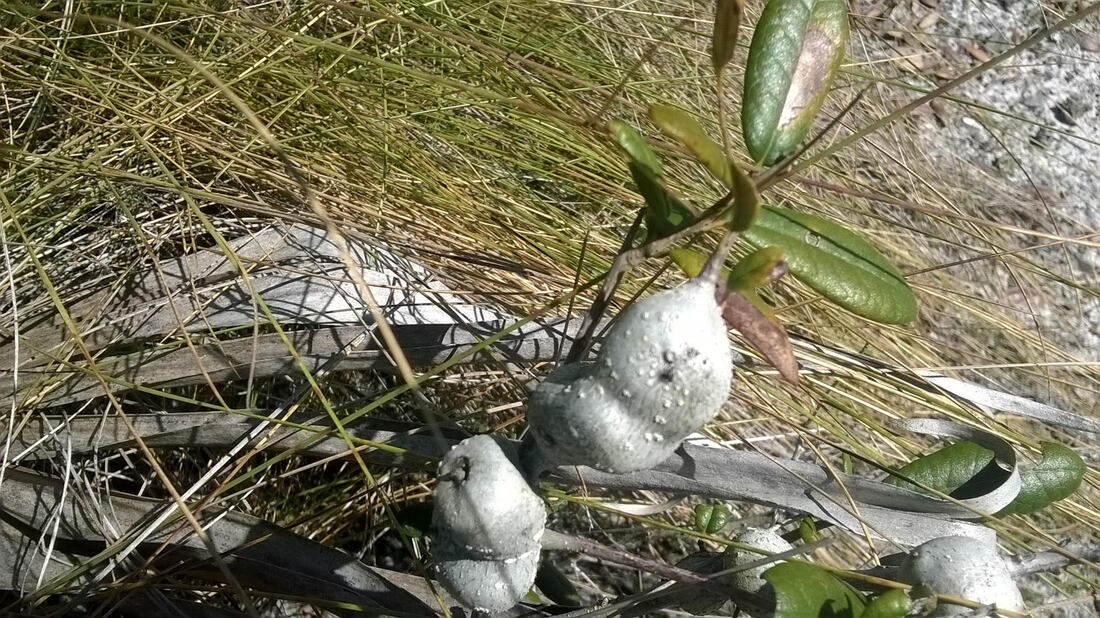
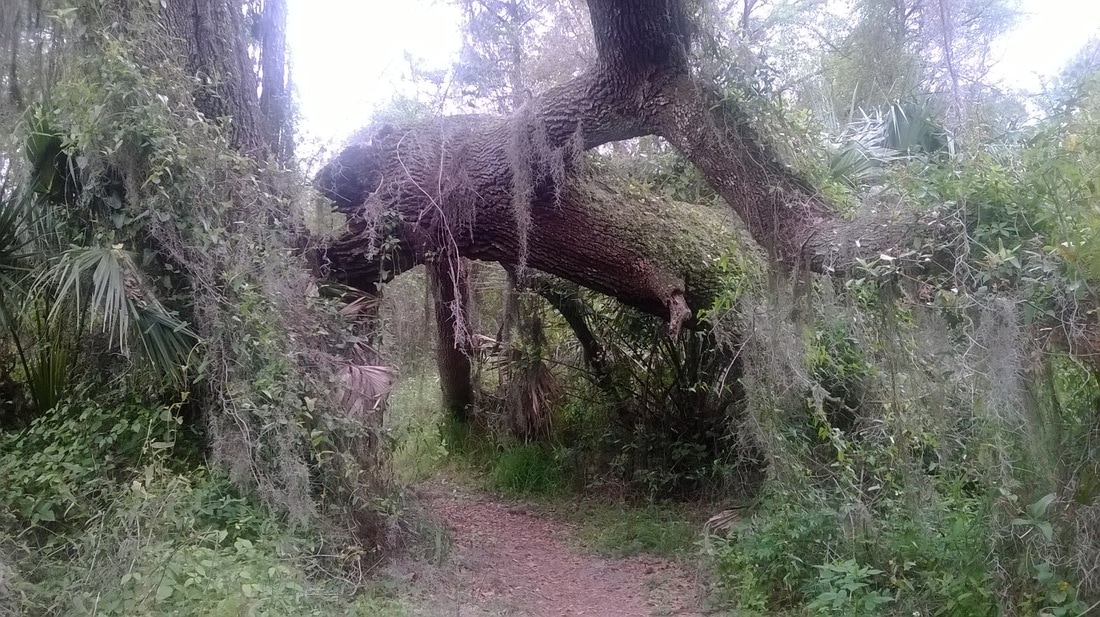


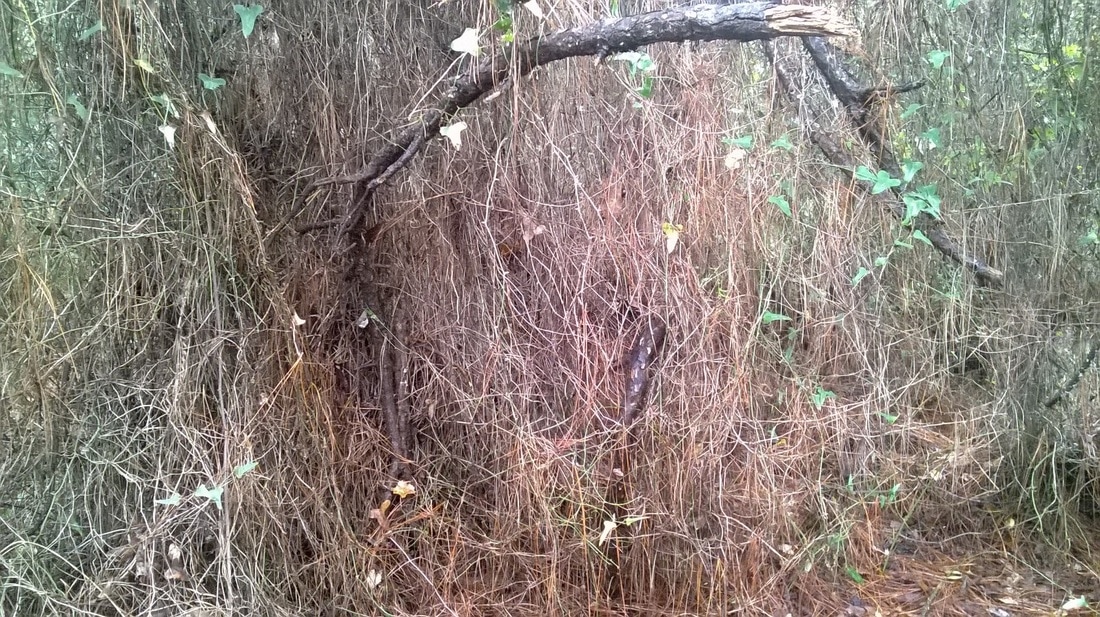

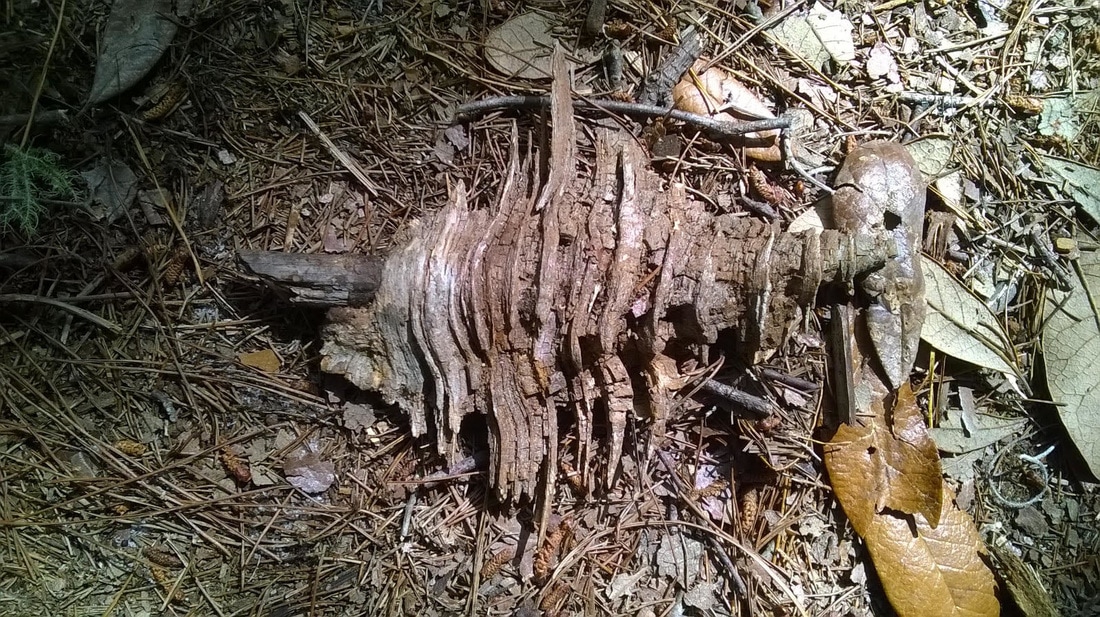
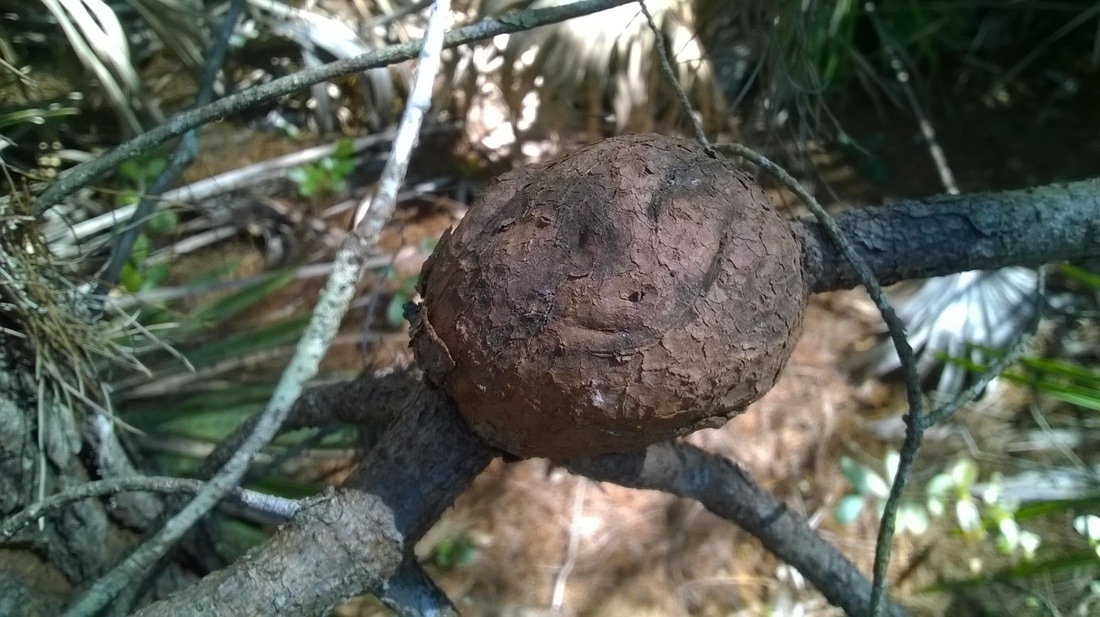
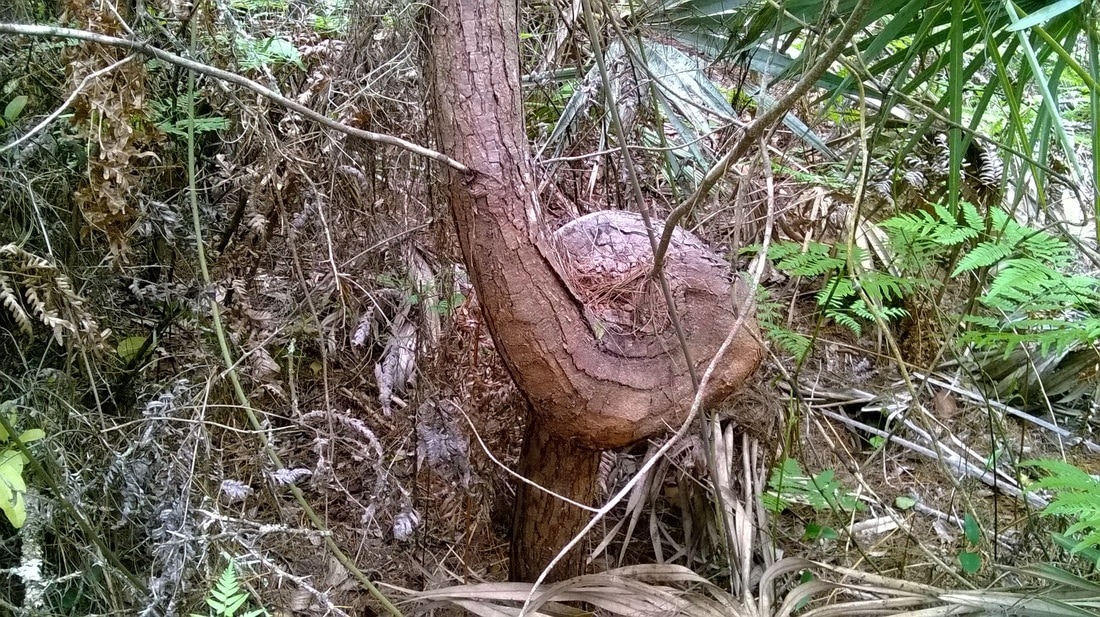
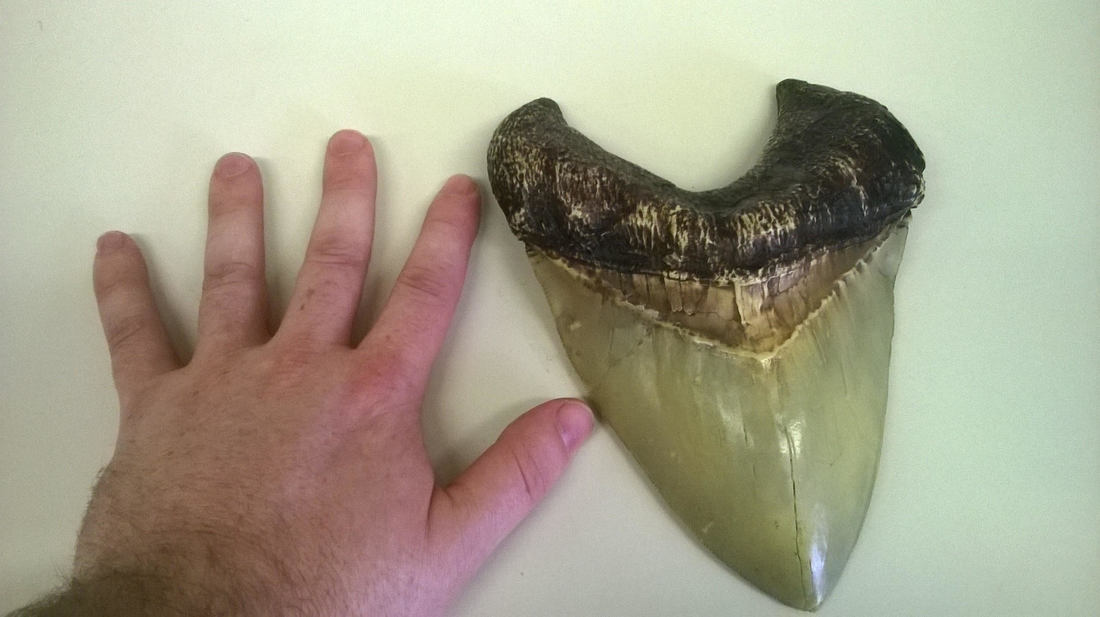
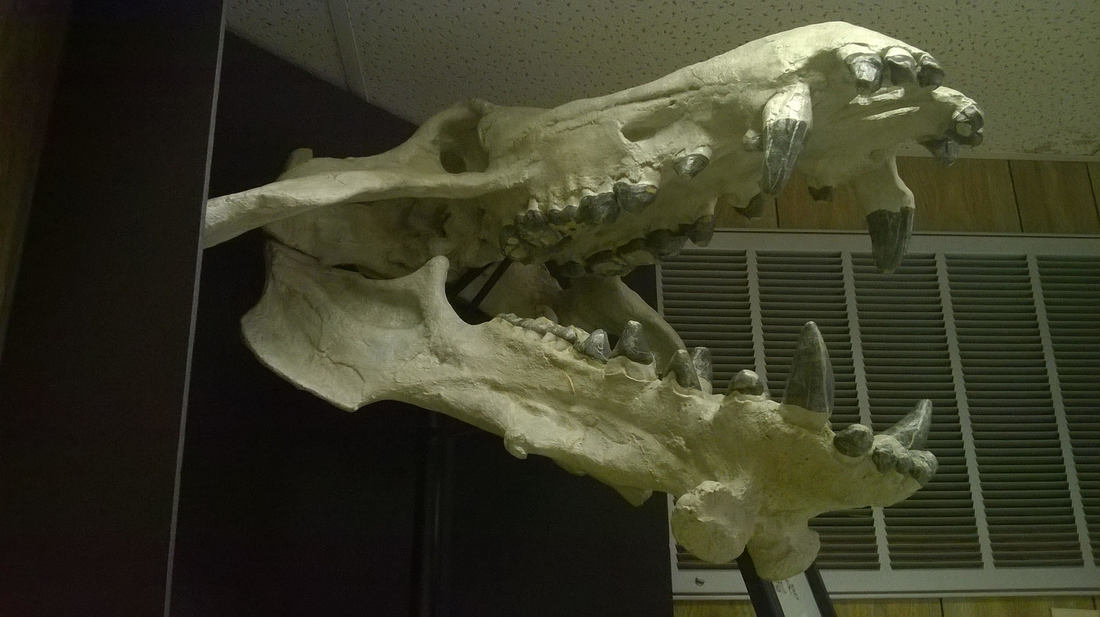


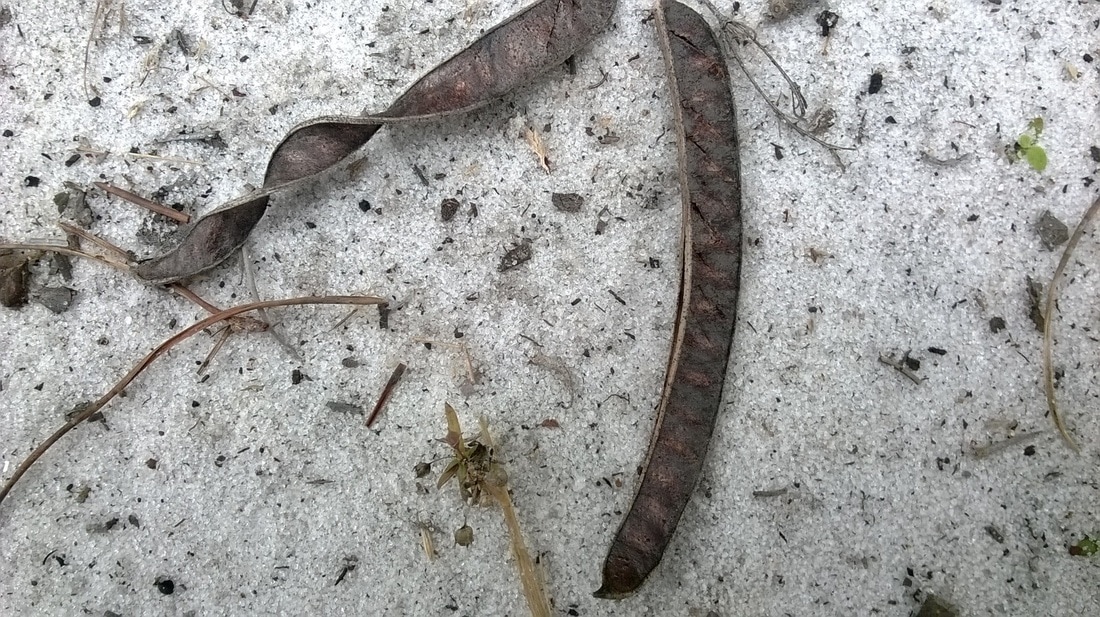

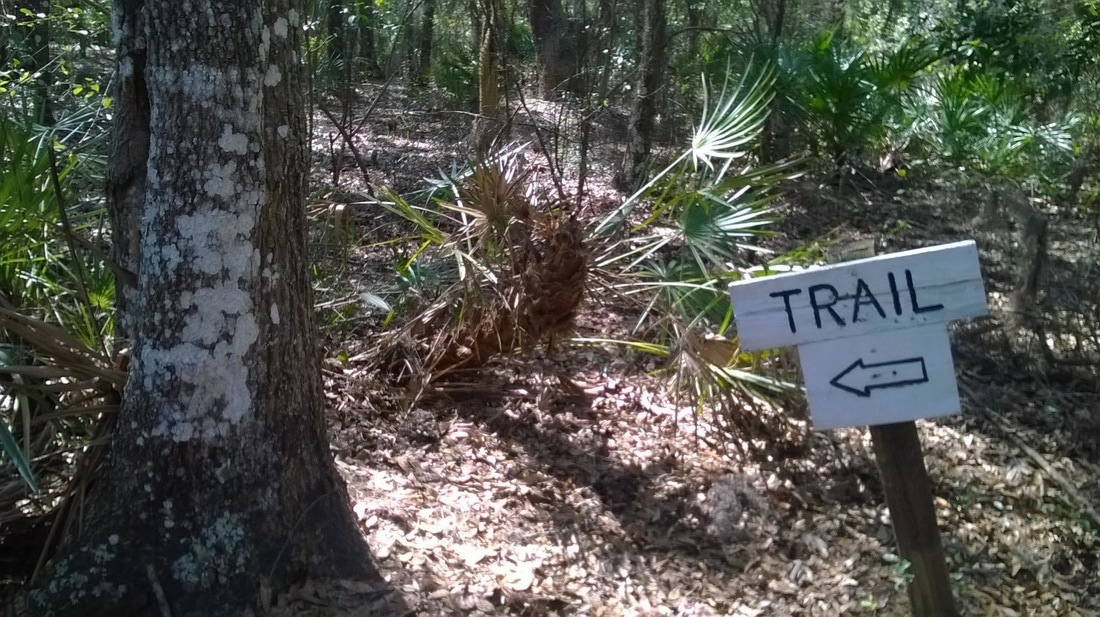








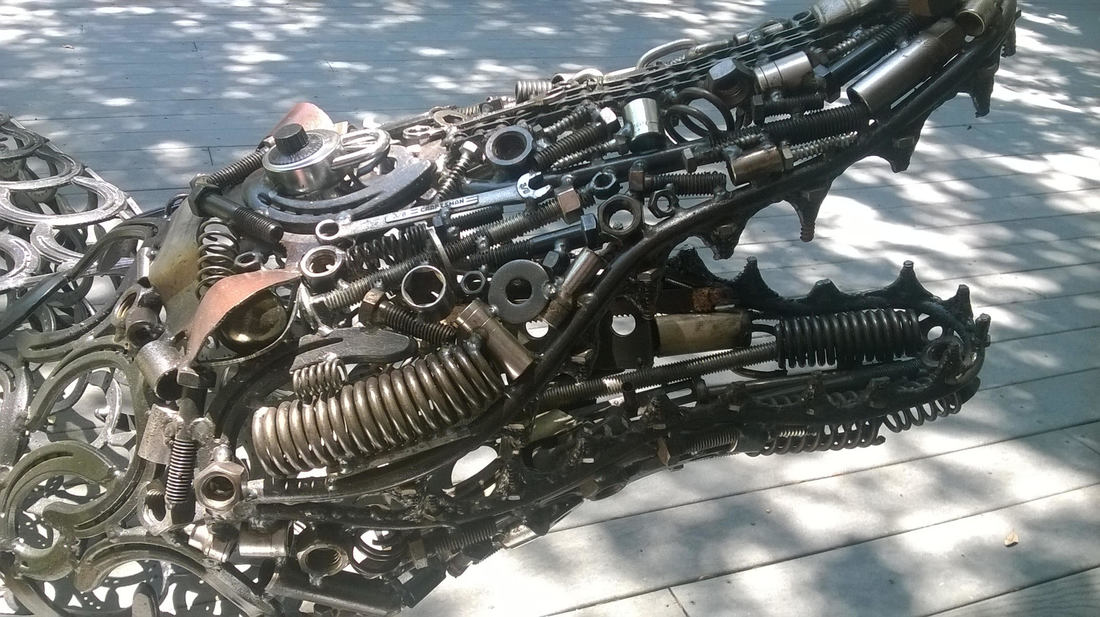




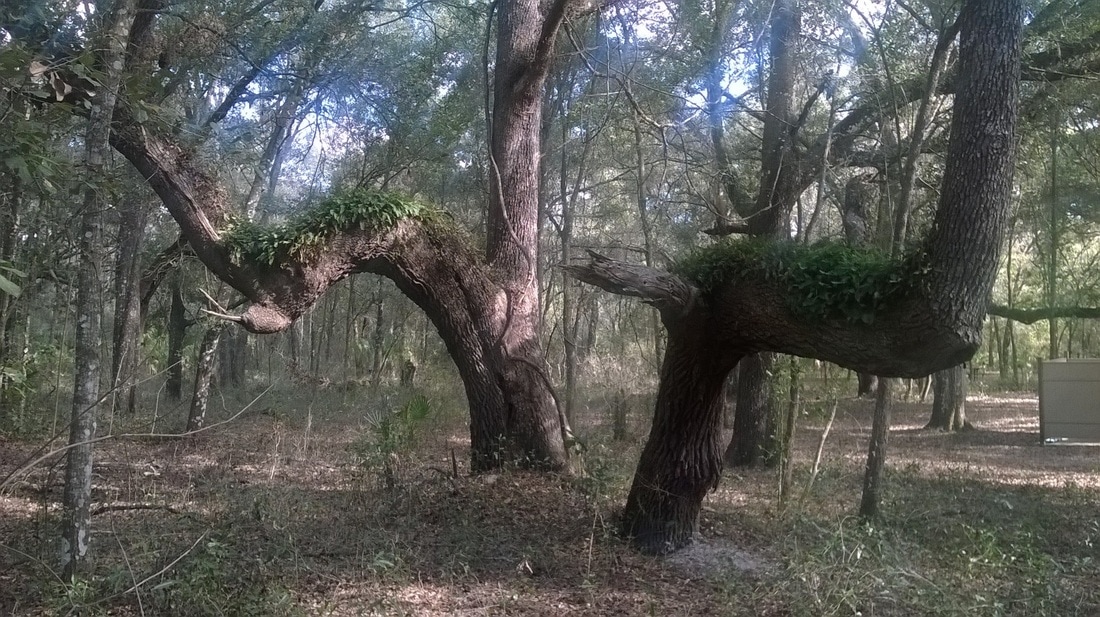

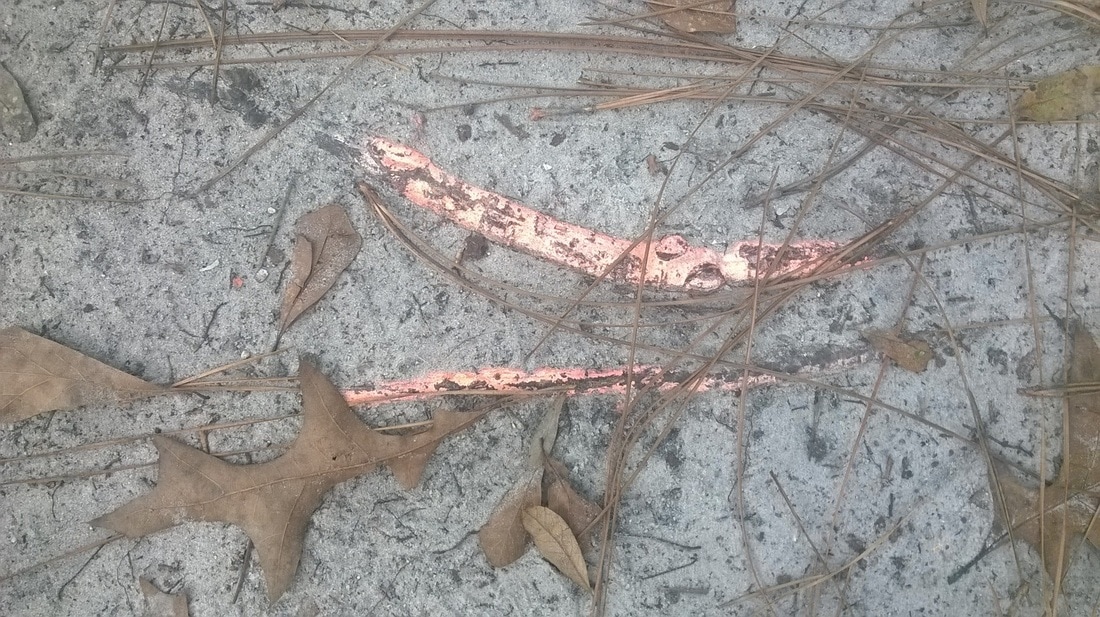
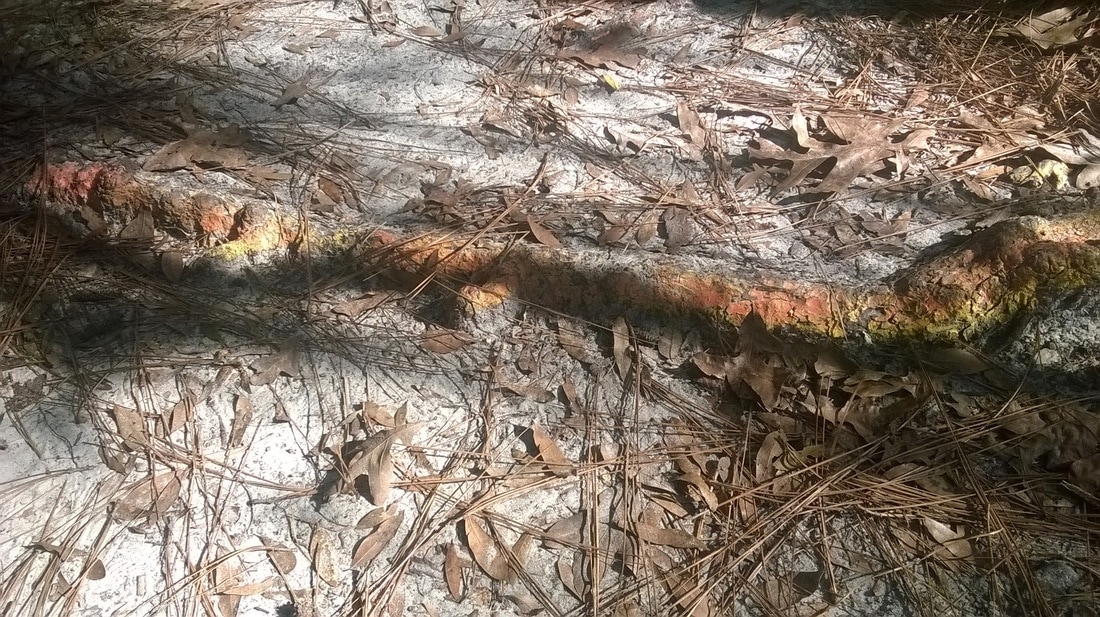
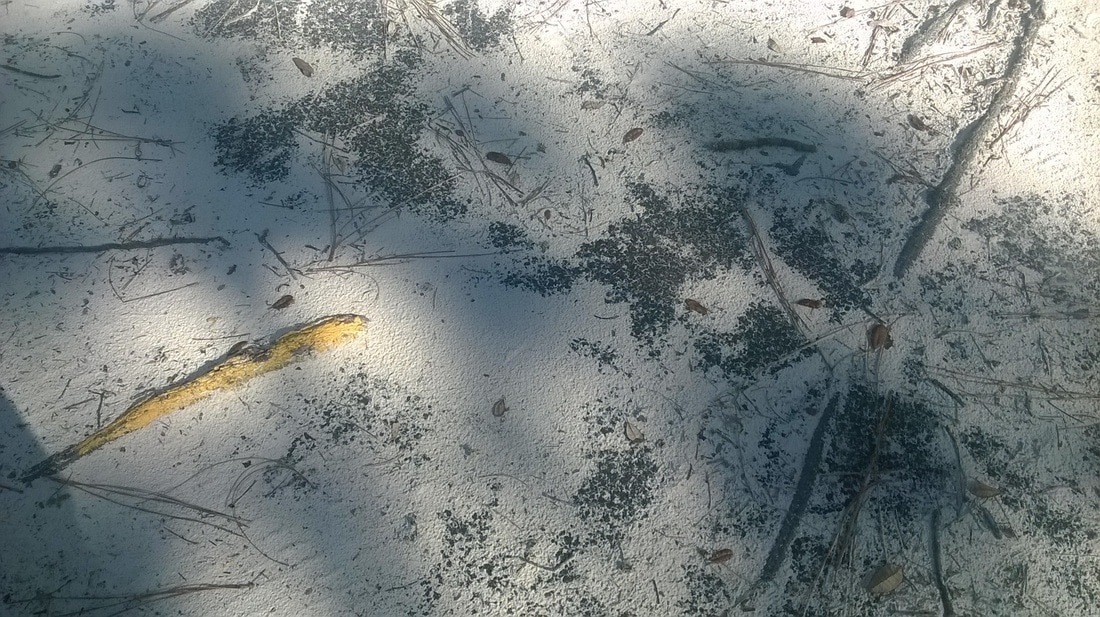
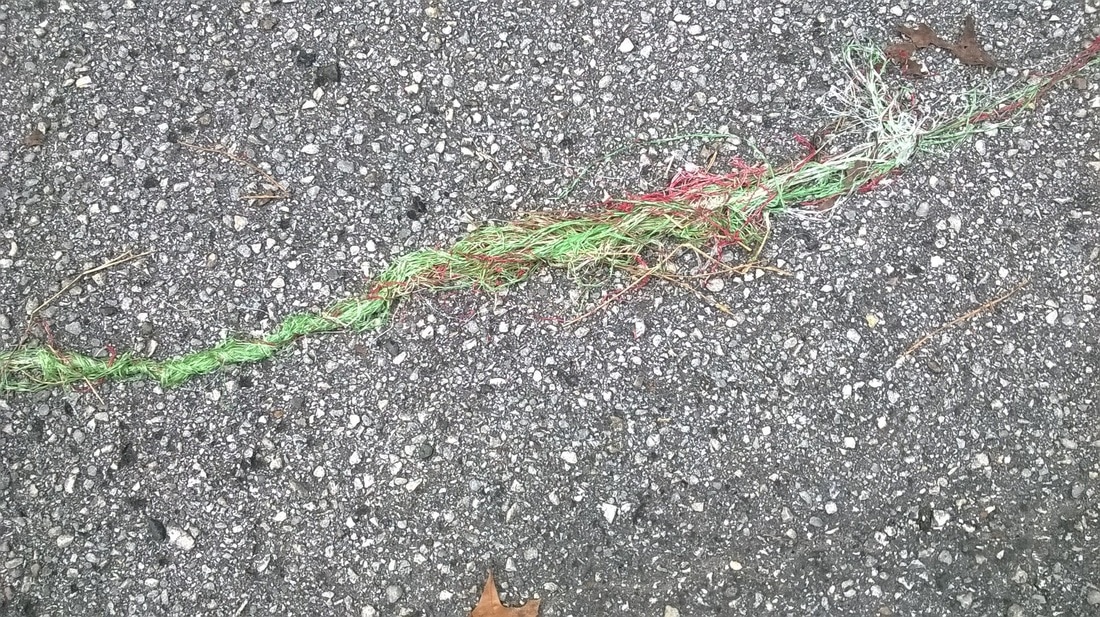
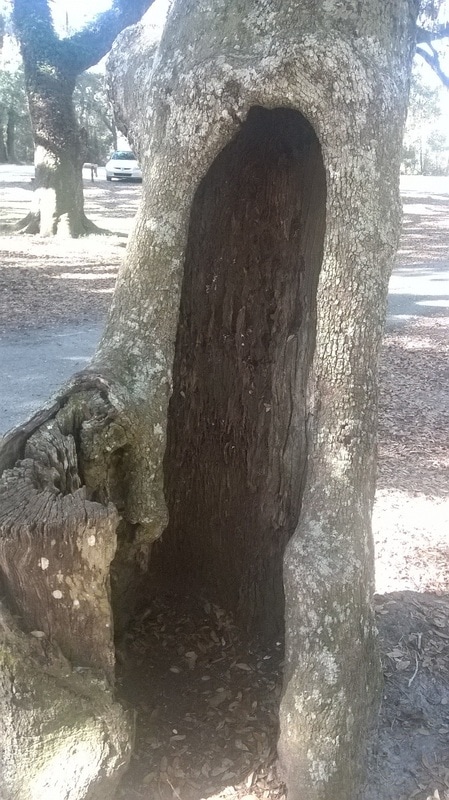
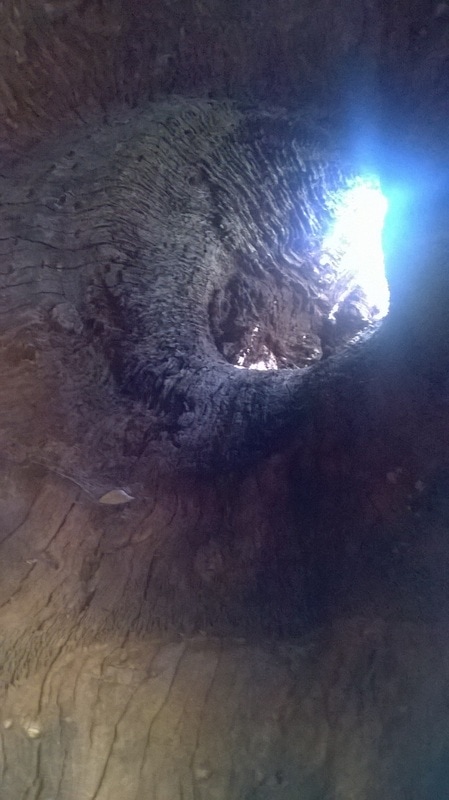
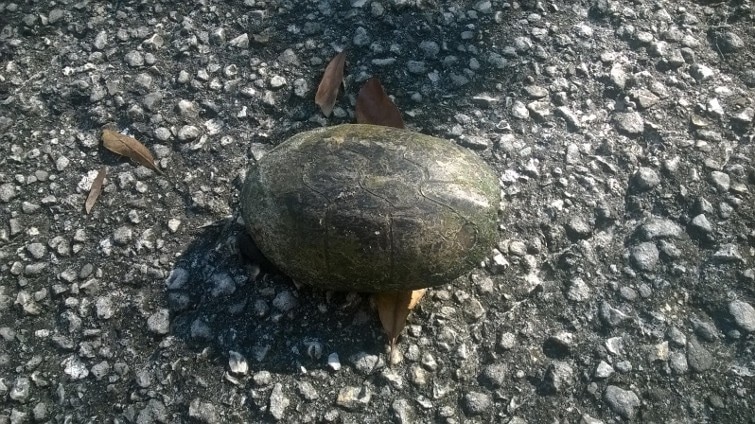
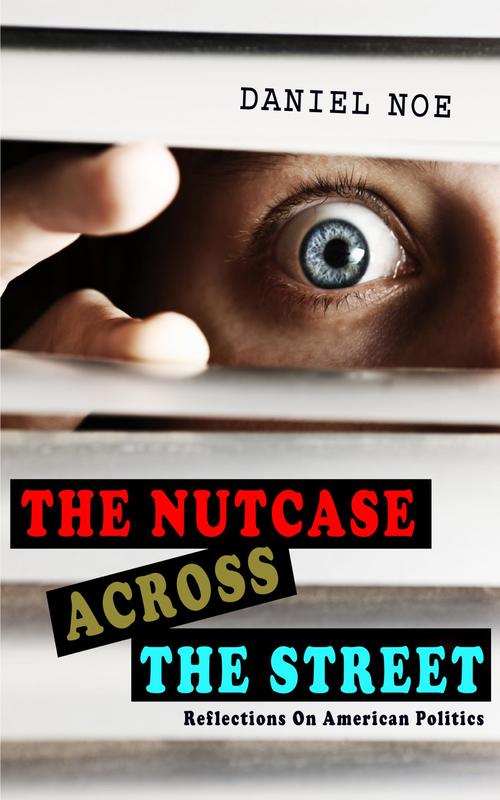
 RSS Feed
RSS Feed